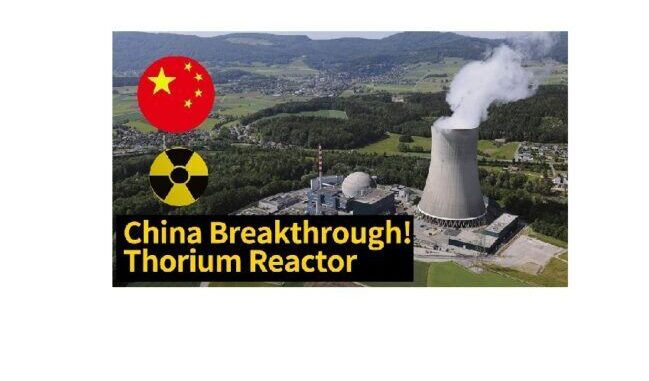
China plans to start building the world’s first molten salt reactor power station next year in the Gobi Desert.
Currently, China operates the only thorium reactor on Earth, located in the Gobi Desert around 120km northwest of the city of Wuwei, Gansu province. This is an experimental reactor which can only produce 2MW of thermal power and does not generate electricity. However, it incorporates some revolutionary technologies, including superalloys that can withstand high temperatures, radiation and chemical corrosion.
This small small experimental reactor received operational approval from China’s Nuclear Safety Administration in June last year and achieved criticality, or sustainable, chain nuclear reaction in October. The success of the pilot project provided a basis and experience for constructing larger reactors capable of power generation.
The site for the new power generation reactor will be west of the experimental small reactor, occupying an area smaller than a soccer field. The reactor does not need water for cooling because it uses liquid salt and carbon dioxide to transfer heat and generate electricity.
Thorium is a weakly radioactive metal that is much more abundant than uranium. It also produces less waste that remains radioactive for a fraction of the time of spent uranium waste.
In terms of safety, thorium can’t cause a reactor meltdown, and it cannot be used to create nuclear weapons as easily. Currently, most uranium fuel reactors use water for cooling risk explosion if the pumps malfunction or stop – as happened in the Fukushima nuclear accident in Japan.
Using thorium as its primary fuel, it means worries over a potential shortage of uranium – the usual fuel used in nuclear reactors – are allayed, as thorium is more abundant than uranium. China is understood to have enough thorium reserves to meet its energy needs for 20,000 years.
The new power generation reactor is scheduled to be completed and operational in 2029, generating heat at a maximum power of 60 megawatts.
Part of the thermal energy will drive a 10MW electric power unit, and the rest will produce hydrogen by splitting water molecules at high temperature.
The small, modular, thorium-based molten salt reactor power station will be constructed and operated by the Shanghai Institute of Applied Physics, Chinese Academy of Sciences, and will will help China achieve energy independence.
The new project also includes many other facilities, such as a research centre and spent fuel processing plant. More than 80 per cent of the spent fuel material will be recycled, and the remaining radioactive waste will be solidified into glass and transported to a national nuclear waste disposal site deep underground in the Gobi Desert.
It is reported that the new reactor will be used for research purposes, primarily serving scientists. However, a wind power base, a solar power station, a molten salt-based energy storage power station, a thermal power plant and a chemical production base will also be constructed at the same time as the thorium power plant.
The different types of energy will all be integrated into a smart grid to provide low-cost, low-carbon, stable and sufficient electricity for industrial production.
Starting from 2030, China will begin constructing commercial modular thorium-based reactors with an electric generation capacity of 100MW or more.
Sources:
- South China Morning Post, 26 Jul 2024. https://www.scmp.com/news/china/science/article/3271978/china-sets-launch-date-worlds-first-thorium-molten-salt-nuclear-power-station
- See also: China Environment News, Oct 5, 2021. https://china-environment-news.net/did-china-just-figure-our-how-to-make-nuclear-energy-safe/